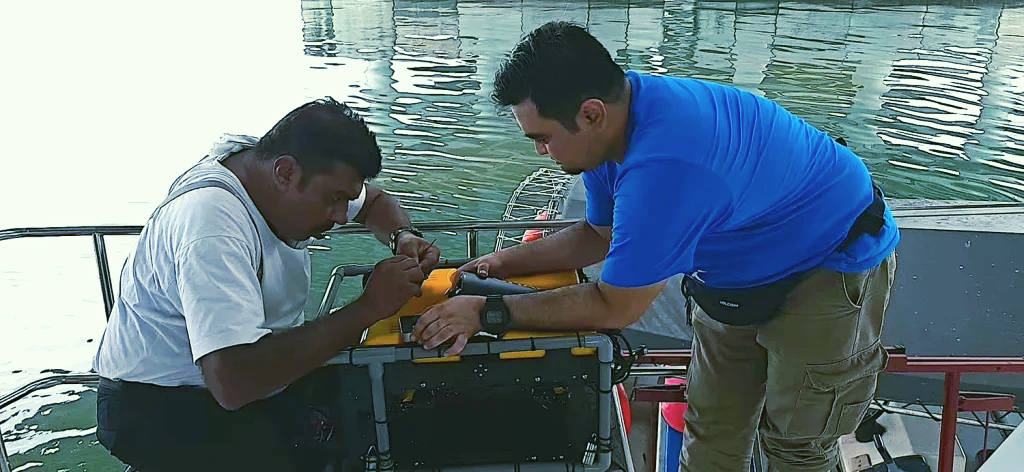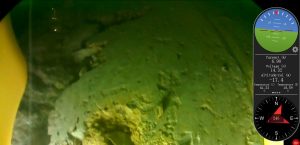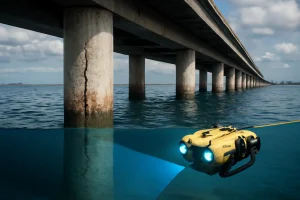
The portable underwater ROV can observe and diagnose the underwater part of the bridge piles from a close distance, such as: cracks, exposed tendons, shedding and other damages. Equipped with a imaging sonar, it can also observe the pile foundation or even map the riverbed.


Application Tips:
(1) Perform your underwater observations in slack tide, especially for River-crossing and Sea-crossing Bridge.
(2) Make a plan, as far upstream as possible you may wish to deploy ROV, panning ROV downstream to observe the pilings. Stay close to the piling every half-meter interval from shallow to deep water to pan around and observe.
(3) Label the piles and check each pile one by one following step 2. Record video data during the whole process.
(4) Disease spots such as exposed rebar, cracking, and peeling need to be detailed with a focused looping inspection.
(5) Recover your ROV, clean and dry it. Check data and issue inspection report.
(6) Check the video quality, apply a 2nd run to supplement the video recording.
⚠ Tips
- Large disturbing currents around the pile foundation may occur for the cross-river and cross-sea bridges, and it is recommended to pull your umbilical cables tightly to avoid crashing or losing the ROV.
- In high-tidal waters, better results can be obtained with imaging sonars.
- For turbid waters, the addition of a water shelter will improve the results.
Special Note:
Bridge abutment underwater pile inspections are extremely difficult where practical experience is important.
⬇️ Underwater ROV inspects 5,118 submerged piles of the cross-sea bridge in Malaysia, 5-9 meters underwater
Product recommendation: Portable Underwater ROV